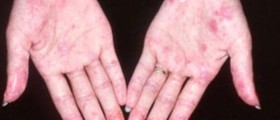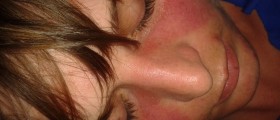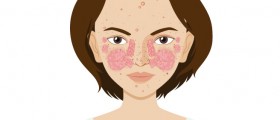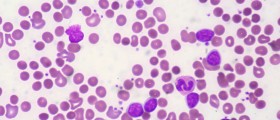
About lupus
Lupus, or more precisely, lupus erythematosus is a disease that affects connective tissue in the body. The exact cause of this disease is unknown but it is probably a result of a combination of genetics, environmental factors and hormones.
Lupus can be a cutaneous disease, limited to the skin, but it can also take form of a devastating systemic disease.
Skin issues associated with lupus can be categorized as acute cutaneous lupus erythematosus or ACLE, subacute cutaneous lupus erythematosus or SCLE and chronic cutaneous lupus erythematosus or CCLE.
Acute cutaneous lupus erythematosus
Acute cutaneous lupus erythematosus or ACLE is characterized by the tell-tale butterfly rash. This rash, which is shaped similar to the wings of a butterfly, consists of red flat areas on the skin, especially on the face. The lesions, which often resemble sunburns, can also appear on other parts of the body, such as arms, legs and torso. The lesions change the color of the skin, but it is usually only temporary, and they do not leave scars.
In patients with ACLE, the rash comes in flares, meaning it is not always present and instead it appears when triggered by certain factors. This is also the main difference between ACLE and the chronic form of cutaneous lupus erythematosus, CCLE. One of the major factors for a flare is exposure to sunlight, especially during summer. Stress, alcohol, environmental pollutants, diseases, drops in the immune system and hormonal changes are also considered to be potential triggers, but this generally varies from person to person.
Patients who have ACLE often exhibit lesions on the gums, sometimes inside the cheeks, on the top of the mouth and on the tongue too.
Acute cutaneous lupus erythematosus is, in the majority of cases, associated with the active systemic lupus.
Treatment for acute cutaneous lupus erythematosus
Lupus cannot be cured, but it is highly treatable. The main form of treatment for ACLE consists of preventing the flares and making them shorter and less severe, when they do occur. Avoiding exposure to sunlight, especially during peak hours, is very important in prevention of flares, and if the exposure cannot be avoided, it is recommended to use sunscreens with high sun protection factor, not lower than SPF 25.
Identifying and avoiding the triggers of flares is also a good means of prevention.
As for the medications, lupus is usually managed with non-steroidal anti-inflammatory drugs, malaria drugs, disease-modifying antirheumatic drugs, corticosteroids, immunosupressants and immunogloblulins.

















Your thoughts on this
Loading...